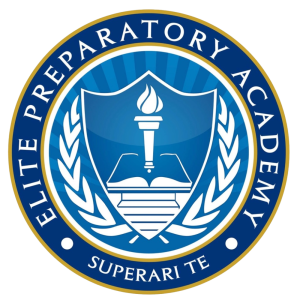Unit 4 - Lesson 5
AP Psychology Lesson: Motivation and Behavior
Unit: Social Psychology and Personality | Lesson: 5 of 6 | Topic: Motivation and Behavior
AP Exam Weighting: 15%–25% of exam score
Instructions: Complete this lesson during class by filling in the blanks and answering questions. All information needed is provided or will be researched in class. This lesson prepares you for the AP Psychology exam by exploring how motivation influences behavior. Use the provided spaces to write your answers clearly, focusing on applying concepts critically.
Warm-Up
Purpose: Get you thinking about what drives behavior.
Questions:
- What motivates you to study for a test?
- Why might someone avoid a challenging task?
Your Answers: Write a short response (1–2 sentences) for each question.
Key Concepts
Instructions: Read the information below and answer the questions to learn core AP concepts. For definitions, write them in your own words based on the content or look up a different definition if directed by your teacher (e.g., via apa.org or Google Scholar).
Content: Motivation is the process driving behavior toward a goal. Intrinsic motivation comes from internal rewards (e.g., studying for personal growth), while extrinsic motivation stems from external rewards (e.g., studying for grades). Maslow’s hierarchy of needs prioritizes motives from physiological needs to self-actualization. Drive-reduction theory suggests behavior reduces biological drives (e.g., eating to reduce hunger). Example: A student joins a club for social belonging (Maslow’s hierarchy). Self-determination theory emphasizes autonomy, competence, and relatedness as motivators. Motivation influences behaviors like achievement or risk-taking. Cultural and social factors shape motivational priorities.
- Define motivation in your own words: _______________________________
- Define intrinsic motivation in your own words: _______________________________
- Define Maslow’s hierarchy of needs in your own words: _______________________________
- Explain how extrinsic motivation influences a behavior, using a specific example:
- Explain how drive-reduction theory influences a behavior, using a different example:
- How does self-determination theory explain motivated behavior?
- Why might cultural factors affect motivational priorities?
- How could a lack of autonomy impact motivation in a school setting?
Guided Activity
Instructions: Work in pairs to complete the two tasks below. Write your answers and be prepared to share one key point from each task with the class.
Task 1: Scenario Analysis: Scenario: A student works hard to earn a scholarship. Analyze how extrinsic motivation and Maslow’s hierarchy of needs contribute to this behavior. For example, consider how rewards or belonging needs drive their effort.
Your Response for Task 1: Explain the role of each concept in the behavior.
Class Share for Task 1: Note one point you’ll share.
Task 2: Case Application: Imagine an athlete trains for personal satisfaction, not fame. Apply the concepts of intrinsic motivation and self-determination theory to explain their behavior. For example, evaluate how internal rewards or autonomy affect their training.
Your Response for Task 2: Apply the concepts to explain the athlete’s behavior.
Class Share for Task 2: Note one point you’ll share.
Class Assignment: Refer to the assignment file for this lesson
Instructions: Complete the tasks below to deepen your understanding of motivation.
Study Summary 1: A 2017 study found that intrinsic motivation predicted higher job satisfaction among teachers than extrinsic rewards like bonuses.
Question 1: How does this study demonstrate the role of intrinsic motivation in behavior, and what might enhance its effects?
Study Summary 2: A 2019 study showed that students motivated by self-determination (autonomy) performed better academically than those driven by external rewards.
Question 2: Evaluate how this study illustrates the impact of self-determination theory on behavior, and suggest one limitation of its findings.
AP Exam Connection: This practices analyzing and evaluating research, a key skill for FRQs.
AP Exam Practice
Instructions: Answer the question below. We’ll review answers as a class to learn exam strategies.
Free-Response Question (FRQ):
Explain how intrinsic motivation, Maslow’s hierarchy of needs, and self-determination theory interact to influence a specific behavior (e.g., achievement, effort, or goal-setting). Provide one example for each factor (intrinsic motivation, Maslow’s hierarchy, self-determination theory) and analyze how they interact to shape the behavior.
Closure
Instructions: Write a brief summary (2–3 sentences) of two key ideas you learned today about how motivation influences behavior.
Extended Practice
Instructions: Complete the tasks below based on today’s lesson to reinforce AP skills.
- Review your answers from this lesson.
- Write a detailed paragraph (5–7 sentences) applying today’s topic to a real-life behavior (e.g., how motivation affects your schoolwork or hobbies). Include references to intrinsic motivation, Maslow’s hierarchy, and self-determination theory, and explain their interaction.
- Find a short article or study on motivation and behavior (e.g., via apa.org) and write 2–3 sentences summarizing its relevance to today’s lesson. Cite the source (e.g., website or article title).
